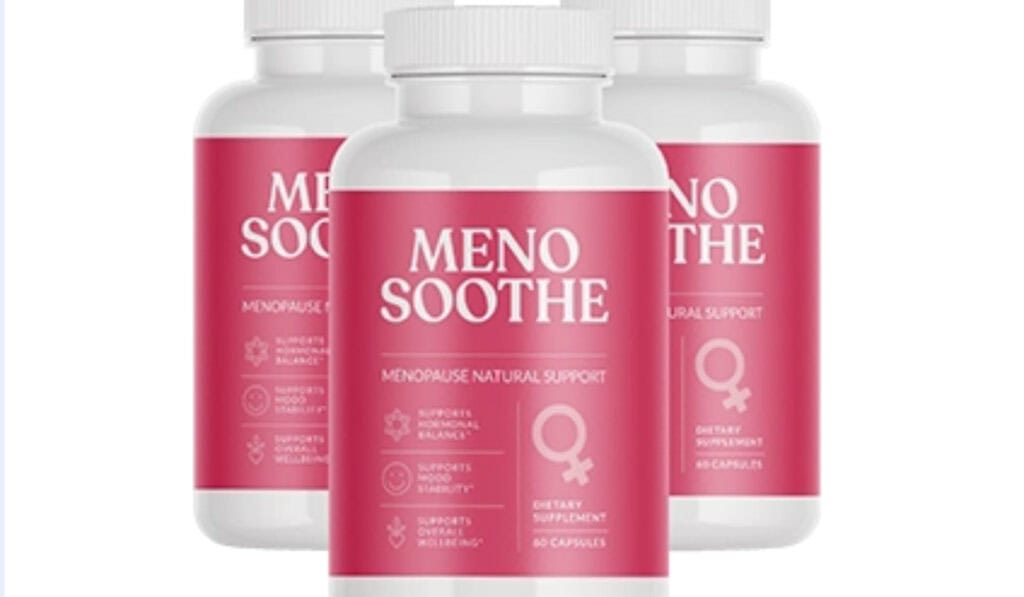A Comprehensive Guide
As you navigate through the various stages of life, your body’s hormone levels fluctuate, which can lead to a range of physical and emotional challenges. Hormone replacement therapy (HRT) has emerged as a pivotal solution for many, offering a way to balance these hormonal changes. However, the choice between bioidentical and synthetic hormone therapy can be confusing. This guide aims to demystify the options, helping you understand the essentials of each therapy, their benefits, risks, and how they can fit into your wellness journey.
Hormonal imbalances can affect both men and women, leading to symptoms that can significantly impact quality of life. Whether it’s the natural transition through menopause or andropause, or conditions like thyroid disorders, the goal of HRT is to alleviate symptoms by restoring hormone levels. Understanding the nuances between bioidentical and synthetic hormones is the first step in making an informed decision about your health.
This comprehensive guide will explore the science, the myths, and the realities of HRT. By delving into the benefits and potential risks associated with both bioidentical and synthetic hormone therapies, you’ll be better equipped to discuss these options with your healthcare provider. The aim is to empower you with knowledge, enabling a personalized approach to hormone therapy that aligns with your health goals and lifestyle.
Unveiling Hormone Therapy: Why It’s Needed
Hormone therapy has become a beacon of hope for many navigating the challenges of hormonal imbalances. These imbalances can manifest in various ways, affecting both men and women across different stages of life. From the discomforts of menopause to the complexities of thyroid issues, hormone therapy offers a pathway to regain balance and improve overall well-being. Understanding the necessity of hormone therapy is the first step toward embracing its potential to enhance your quality of life.
Hormone Replacement Therapy: A Lifeline for Many
For countless individuals, hormone replacement therapy (HRT) has been a lifeline, offering relief from the often debilitating symptoms of hormonal imbalance. Symptoms such as mood swings and weight gain can disrupt daily life, while the risk of osteoporosis becomes a significant concern as hormone levels decline. The benefits of bioidentical hormone replacement therapy (BHRT) have been particularly noteworthy, with many reporting improvements in overall wellness. Tailoring a treatment plan to your unique needs can dramatically enhance your quality of life, reducing the discomforts associated with hormonal imbalances.
Bioidentical vs. Synthetic Hormones: Understanding the Basics
When exploring hormone therapy, you’ll encounter two main types: bioidentical and synthetic hormones. Both aim to address hormone imbalances in men and women, but they differ in composition and origin. Bioidentical hormones are crafted to chemically match the hormones naturally produced by your body, offering a more natural approach to therapy. Synthetic hormones, on the other hand, are made from artificial sources and may have a different chemical structure than your body’s hormones. This fundamental difference influences how each is used and how your body responds to therapy.
Bioidentical Hormones: The Natural Choice?
Bioidentical hormones are often hailed as the natural choice for hormone replacement therapy, mirroring the body’s hormones on a molecular level. This resemblance is believed to offer a more harmonious integration with your body’s biological processes, potentially leading to fewer side effects compared to synthetic options. Choosing bioidentical hormones is a decision that many feel aligns closer with a natural approach to health and wellness.
The Science Behind Bioidentical Hormones
The allure of bioidentical hormones lies in their molecular similarity to the hormones your body naturally produces. This similarity is thought to result in a smoother integration into your body’s hormonal framework, potentially minimizing the risk of adverse effects. The science behind bioidentical hormones supports their use in effectively addressing symptoms of hormonal imbalances, providing a foundation for their growing popularity in HRT.
Health Benefits and Wellness Improvements
The transition through menopause can be a challenging period for many women, marked by symptoms that can significantly affect quality of life. Bioidentical hormone replacement therapy (BHRT) has been recognized for its potential to alleviate symptoms of menopause, offering a pathway to improved wellness and health. By closely matching the body’s natural hormones, BHRT can provide relief from menopausal symptoms, enhancing overall well-being.
Women’s Health and Bioidentical Hormone Therapy
For women grappling with the symptoms of menopause, bioidentical hormone therapy has emerged as a compelling option. Beyond alleviating hot flashes and night sweats, BHRT has been associated with a range of health benefits, from improved mood and energy levels to a potential reduction in the risk of osteoporosis. Tailoring therapy to the individual’s specific hormonal needs has made BHRT a key player in promoting women’s health and wellness during menopause and beyond.
Debunking Myths: Breast Cancer Risk and Bioidentical Hormones
Discussing breast cancer risk factors with bioidentical hormones requires unraveling some myths. Many believe that because bioidentical hormones are “natural,” they don’t influence cancer risk. However, it’s crucial to understand that any hormone therapy can influence your body’s hormonal balance and potentially affect breast cancer risk. Research is ongoing, but current evidence suggests that bioidentical hormones may have a similar risk profile to synthetic ones when it comes to breast cancer, emphasizing the importance of personalized risk assessment and monitoring.
Synthetic Hormone Therapy: A Closer Look
Synthetic hormone therapy has been a cornerstone in managing symptoms associated with menopause, but it’s not without its debates. This type of therapy uses hormones that are not identical to those the body produces. Critics often point to concerns over cardiovascular disease and the effects of estrogen that isn’t balanced with natural progesterone. Understanding the balance between benefits and risks is key, especially for those at higher risk for heart-related conditions.
What Constitutes Synthetic Hormone Therapy?
Synthetic hormone therapy includes treatments that use hormones created in a lab, which are not identical to the hormones produced by your body. These treatments often focus on alleviating symptoms of menopause, such as hot flashes and vaginal dryness, by supplying hormones like estrogen and progesterone in forms that aim to mimic their natural counterparts. However, because these hormones can differ in structure from those your body makes, their effects, including on cardiovascular disease, can also differ.
Evaluating the Health Risks
When considering any hormone therapy, it’s vital to weigh the potential health risks. Hormone imbalance, a possible side effect, can manifest in various ways, impacting your overall well-being. For some, the benefits of alleviating menopausal symptoms or addressing hormonal deficiencies outweigh the risks. However, each individual’s health profile is different, necessitating a personalized approach to evaluating the potential for hormone imbalance and other risks.
The Role of FDA-Approved Synthetic Hormones
FDA-approved synthetic hormones are rigorously tested for safety and efficacy before they can be marketed. This approval process ensures that patients are receiving treatments that meet strict standards. While these hormones are designed to mimic the effects of natural hormones in the body, they are not identical, which can influence how they are metabolized and their ultimate impact on your health.
Analyzing the Claims: Bioidentical vs. Synthetic
In the debate between bioidentical and synthetic hormones, it’s essential to sift through the claims critically. Bioidentical hormones, often marketed as being “natural” and more in sync with the body’s biology, have been touted for their safety and efficacy, particularly in the management of menopausal symptoms. However, both bioidentical and synthetic hormones have their roles, benefits, and risks, making it imperative to consult healthcare professionals for advice tailored to your specific health needs.
Safety Concerns and Efficacy
The safety concerns and efficacy of compounded bioidentical hormone therapy versus compounded bioidentical menopausal hormone therapy are hot topics. These therapies aim to treat menopausal symptoms with hormones that are chemically identical to those the body produces. While some advocate for their use citing personalized treatment plans, it’s essential to review and discuss these options with a healthcare provider to ensure they align with your health goals and consider the management of menopausal symptoms comprehensively.
Addressing Breast Cancer Risks in Both Therapies
When comparing bioidentical and synthetic hormones, the increased risk of breast cancer often comes into the conversation. Studies suggest that both compounded bioidentical hormones and synthetic hormones can influence the risk of developing breast cancer in postmenopausal women. However, the evidence is still evolving. It’s critical to have an open dialogue with your healthcare provider about which option might be safer and more effective for you, considering your personal and family medical history.
Impact on Bone Health: A Comparative Analysis
Bone health is a significant concern as you age, especially during and after menopause. Research, including studies by the Mayo Clinic, has shown that both bioidentical and synthetic hormones can have positive effects on bone density, potentially reducing the risk of osteoporosis. The choice between bioidentical and synthetic hormone therapy should consider their impact on your bone health, among other factors, to ensure you’re making the best decision for your long-term well-being.
Understanding the Terminology and Treatment Options
When navigating treatment options for menopausal symptoms, understanding the terminology around estrogen and progesterone, both steroid hormones, is crucial. Bioidentical progesterone and its beneficial effects on vasomotor symptoms highlight the importance of hormone therapy in the treatment of menopausal symptoms. Knowing the differences between available therapies can empower you to make informed decisions about your health care.
FDA-Approved vs. Compounded Hormones
The choice between FDA-approved and compounded hormones is significant. FDA approval means a hormone has been tested for safety and effectiveness, offering a level of assurance. Compounded hormones, tailored to individual needs, may offer personalized solutions but lack the standardized testing that FDA-approved options undergo. Discussing these options with a healthcare provider can help you navigate the benefits and risks.
Estrogens and Progestogens in Focus
Estrogens and progestogens play crucial roles in hormone therapy, with FDA approval ensuring their safety and efficacy for use. Understanding how they work and their effects on the body is vital for anyone considering hormone therapy for menopausal symptoms or hormonal imbalances.
Estrogen and Progesterone Metabolism and Their Receptors
The metabolism of estrogen and progesterone and their interaction with specific receptors in the body are central to understanding how hormone therapy affects you. These processes influence everything from mood swings to bone density, highlighting the complexity of hormone therapy and the importance of a tailored approach to treatment.
Personalized Care and Treatment Plans
Personalizing care and treatment plans means considering every aspect of your health, including how hormone therapy might affect vaginal dryness or mood swings. Personalized plans aim to maximize the benefits while minimizing risks, often involving a choice between bioidentical and synthetic hormones, including animal-derived options, to find the best fit for your body’s needs.
The Importance of Customized Therapy
Customized hormone therapy recognizes that every individual’s body responds differently to treatments. Whether addressing menopausal symptoms, hormone imbalances, or specific conditions like vaginal dryness or mood swings, a personalized approach enables healthcare providers to tailor treatments. This customization can help maximize the benefits of hormone therapy while aiming to minimize potential side effects, offering a more effective and patient-centric approach to healthcare.
Debating the Use of Salivary Testing for Personalized Treatment
When considering personalized hormone replacement therapy, salivary testing often comes into play. This method, used for measuring levels of sex hormones, presents a non-invasive option for individuals. However, the debate around its accuracy and reliability in guiding therapy decisions persists. Advocates argue it provides precise hormone level readings, which can lead to highly customized treatment plans. Critics, on the other hand, question its consistency and suggest that blood tests might offer a more accurate picture of hormone levels.
Navigating the Claims About Compounded Bioidentical HRT (CBHT)
Compounded bioidentical hormone replacement therapy (CBHT) offers a tailored approach during perimenopause and menopause, aiming to alleviate symptoms through hormones like estrogen and testosterone. Despite the appeal of customized solutions, it’s crucial to weigh the potential risks. These risks can include inconsistencies in hormone dosages and lack of rigorous safety testing compared to FDA-approved options. Understanding these factors is essential for individuals considering CBHT as a means to manage their menopausal symptoms effectively.
Safety, Delivery, and Tolerability
When it comes to the safety, delivery, and tolerability of compounded medications, the role of the compounding pharmacy is paramount. These pharmacies customize medications to fit the unique needs of patients, including hormone replacement therapies. However, the lack of standardization raises concerns over the consistency and safety of these medications. Ensuring that a compounding pharmacy is reputable and adheres to strict compounding standards can mitigate risks and enhance the tolerability of customized treatments.
The Realities of Custom Compounded Formulations
Compounded bioidentical hormone therapy offers a personalized treatment option, but it’s vital to understand its realities. This approach allows for the customization of hormone dosages based on individual needs, potentially improving patient outcomes. However, the custom nature of these formulations means they haven’t undergone the same rigorous testing for efficacy and safety as standardized treatments. Patients and healthcare providers must carefully consider these factors when choosing compounded bioidentical hormone therapy as a treatment option.
The Patient Care Approach: Making Informed Choices
Opting for hormone replacement therapy requires a thoughtful patient care approach, emphasizing the importance of making informed choices. According to the American College of Obstetricians and Gynecologists, treatments should be safe and effective, particularly in the management of menopausal symptoms. This approach involves discussing the benefits and risks of different therapies, considering individual health histories, and closely monitoring treatment outcomes to ensure the best possible patient care.
Considerations for Opting for Bioidentical Hormone Replacement
In the United States, choosing bioidentical hormone replacement involves several considerations. These include evaluating the benefits of a more natural hormone option derived from plant materials, understanding the regulatory status, and considering personal health goals. It’s crucial for individuals to engage in open discussions with healthcare providers about the advantages and potential risks of bioidentical hormones to make an informed decision that aligns with their health and wellness objectives.
Synthetic Hormone Therapy: When It Might Be the Better Choice
For some individuals, synthetic hormone therapy may emerge as the preferable option, especially when considering the management of specific health conditions like cardiovascular disease. The effects of estrogen and other synthetic hormones on the heart and overall health can influence this decision. It’s essential to consider the broader spectrum of benefits and risks, including how synthetic hormones might interact with existing health issues, to determine the most appropriate therapy choice.
Wrapping It Up: The Future of Hormone Therapy
The landscape of hormone replacement therapy (HRT) is evolving, with ongoing research and technological advancements shaping its future. As new therapies emerge and our understanding of hormone interactions deepens, the potential for more effective and safer treatments increases. Looking forward, the focus on personalized medicine may further refine HRT, making it possible to tailor treatments more precisely to individual patient needs and health profiles.
What’s Next for HRT? Trends and Predictions
The future of hormone replacement therapy (HRT) looks promising, with trends leaning towards more personalized and precise treatment options. Advancements in biotechnology and a better understanding of hormonal health are expected to lead to innovations in how HRT is prescribed and administered. The growing interest in bioidentical hormones, coupled with technological advancements in delivery systems, suggests a move towards treatments that are not only more effective but also come with fewer side effects.
Making the Decision: Bioidentical vs. Synthetic Hormone Therapy
Making the decision between bioidentical and synthetic hormone therapy involves a comprehensive evaluation of the benefits and risks associated with each option. It’s essential to consider personal health history, the presence of any health problems, and the goals of therapy. Consulting with healthcare professionals, reviewing the latest clinical consensus, and considering practice bulletins from medical organizations can provide valuable insights. Ultimately, the choice should be informed by the latest evidence and tailored to the individual’s specific needs and health considerations.




